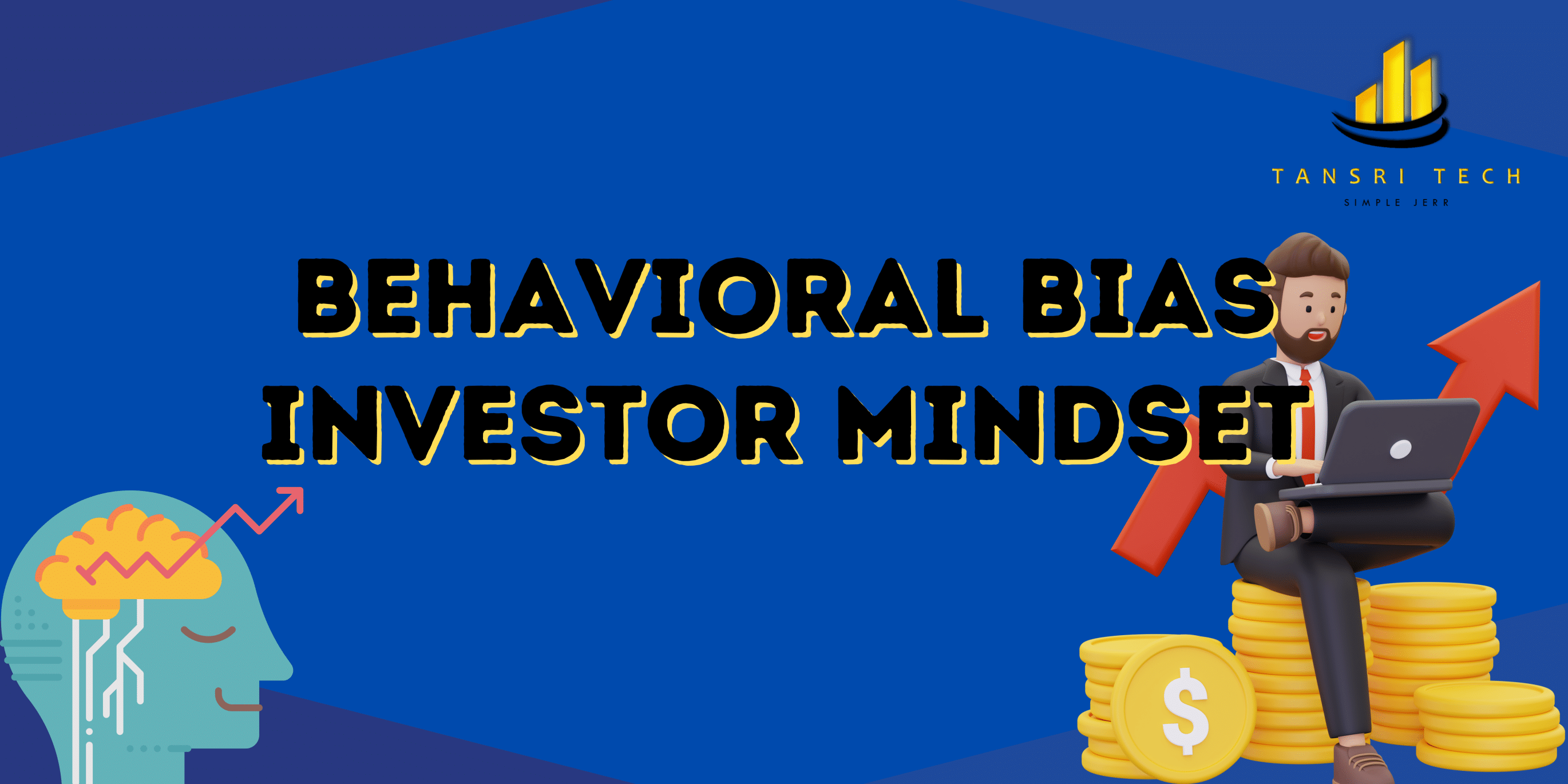
Behavioral bias is a common phenomenon in the world of finance, and it can have a big impact on one’s investment decisions. It is a cognitive bias that results from the psychological effects of emotion and instinctive decision-making. If left unchecked, it can lead to mistakes and bad financial decisions. In this blog post, we’ll discuss what behavioural bias is, the different types of behavioural bias, the impact of behavioural bias on investment decisions, and how you can overcome it to develop an investor mindset.
What is Behavioral Bias?
Behavioural bias is the tendency of individuals to make decisions based on their beliefs, values, and preferences, rather than on the facts and data. It is a form of cognitive bias that results from the psychological effects of emotion and instinctive decision-making. Behavioural bias often leads to poor decision-making and can have a significant impact on one’s investment decisions.
When it comes to investing, behavioural bias can lead to overconfidence, overreaction, and the inability to take risks. It can also lead to poor judgment and irrational decision-making. It can have a significant impact on the returns of an investment portfolio.
Types of Behavioral Bias
There are several different types of behavioural biases that can affect investment decisions. The most common types of behavioural bias include:
- Overconfidence bias: This is when an individual is overly confident in their abilities and makes decisions based on their own beliefs and opinions, rather than on the facts and data.
- Loss aversion bias: This is when an individual is more likely to avoid losses than to take risks for potential gains.
- Anchoring bias: This is when an individual becomes fixated on a particular piece of data or opinion and tends to overlook other potential options.
- Availability bias: This is when an individual tends to rely on the most readily available information, rather than researching and considering all the options.
- Confirmation bias: This is when an individual looks for information that confirms their existing beliefs, rather than considering new information that could challenge their beliefs.
The Impact of Behavioral Bias on Investment Decisions
Behavioural bias can have a significant impact on an individual’s investment decisions. It can lead to overconfidence, overreaction, and the inability to take risks. It can also lead to poor judgment and irrational decision-making. Behavioral bias can lead to the misallocation of resources, missed opportunities, and poor returns on investments.
Behavioural bias can also lead to emotional investment decisions. When individuals are emotionally invested in an investment, they are more likely to ignore potential risks and make decisions based on their emotions. This can lead to bad investment decisions and can have a negative impact on an individual’s portfolio.
Strategies for Overcoming Behavioral Bias
In order to succeed in the world of investing, it is important to understand and overcome behavioral bias. Here are some strategies that can help you do just that:
- Develop an investor mindset: The first step to overcoming behavioral bias is to develop an investor mindset. This involves understanding the psychology of investing and learning how to make decisions based on facts and data rather than emotion.
- Identify your mental traps: It is important to identify the mental traps that lead to behavioral bias. Once you have identified your mental traps, you can work to overcome them and make better investment decisions.
- Practice emotional investment: It is important to practice emotional investment, which involves making decisions based on facts and data rather than emotion. This can help you make better investment decisions and help you avoid making emotional investments.
- Avoid behavioral biases in finance: There are certain behavioral biases in finance that should be avoided. These include overconfidence bias, loss aversion bias, anchoring bias, availability bias, and confirmation bias. By avoiding these biases, you can make better investment decisions.
Developing an Investor Mindset
In order to develop an investor mindset, it is important to understand the psychology of investing. This involves understanding the different types of biases that can affect one’s investment decisions and learning to recognize them. It also involves learning to make decisions based on facts and data rather than emotion.
By understanding the psychology of investing, you can develop an investor mindset that will help you make better investment decisions. You can also learn to recognize the mental traps that lead to behavioral bias and work to overcome them.
Understanding the Psychology of Investing
In order to understand the psychology of investing, it is important to understand the different types of cognitive biases that can affect one’s investment decisions. It is also important to understand how emotion can lead to bad investment decisions. By understanding these concepts, you can develop an investor mindset and make better investment decisions.
The main types of cognitive biases that can affect one’s investment decisions include overconfidence bias, loss aversion bias, anchoring bias, availability bias, and confirmation bias. It is important to recognize these biases and work to overcome them in order to make better investment decisions.
Identifying Your Mental Traps
The next step to developing an investor mindset is to identify your mental traps. Mental traps are the thoughts and beliefs that lead to behavioral bias. By identifying these mental traps, you can work to overcome them and make better investment decisions.
Some common mental traps include the belief that one knows more than they actually do, the fear of missing out, and the tendency to rely on the most readily available information. It is important to recognize these mental traps and work to overcome them in order to make better investment decisions.
Practicing Emotional Investment
Once you have identified your mental traps, it is important to practice emotional investment. This involves making decisions based on facts and data rather than emotion. It is important to practice emotional investment in order to make better investment decisions and avoid making emotional investments.
When practicing emotional investment, it is important to focus on the facts and data. You should also consider all the potential risks and rewards of each investment decision. By focusing on the facts and data, you can make better investment decisions and avoid making emotional investments.
Tips for Avoiding Behavioral Bias in Finance
Finally, it is important to remember some tips for avoiding behavioral bias in finance. These include:
- Don’t let emotion cloud your decision-making: Always focus on the facts and data rather than letting emotion cloud your decision-making.
- Take a step back: If you find yourself getting too emotionally invested in an investment, take a step back and consider all the potential risks and rewards.
- Research thoroughly: Make sure to research all the potential options before making an investment decision.
- Get a second opinion: It is always a good idea to get a second opinion before making an investment decision.
By following these tips, you can avoid making emotional investment decisions and make better investment decisions overall.
Conclusion
Behavioral bias can have a significant impact on one’s investment decisions. It can lead to overconfidence, overreaction, and the inability to take risks. It can also lead to poor judgment and irrational decision-making. In order to overcome behavioral bias, it is important to understand the psychology of investing and learn to make decisions based on facts and data rather than emotion. By understanding the different types of behavioral bias and developing an investor mindset, you can make better investment decisions and avoid making emotional investments.
Learn more on Cryptocurrency and Major Asset Class
Join my telegram




